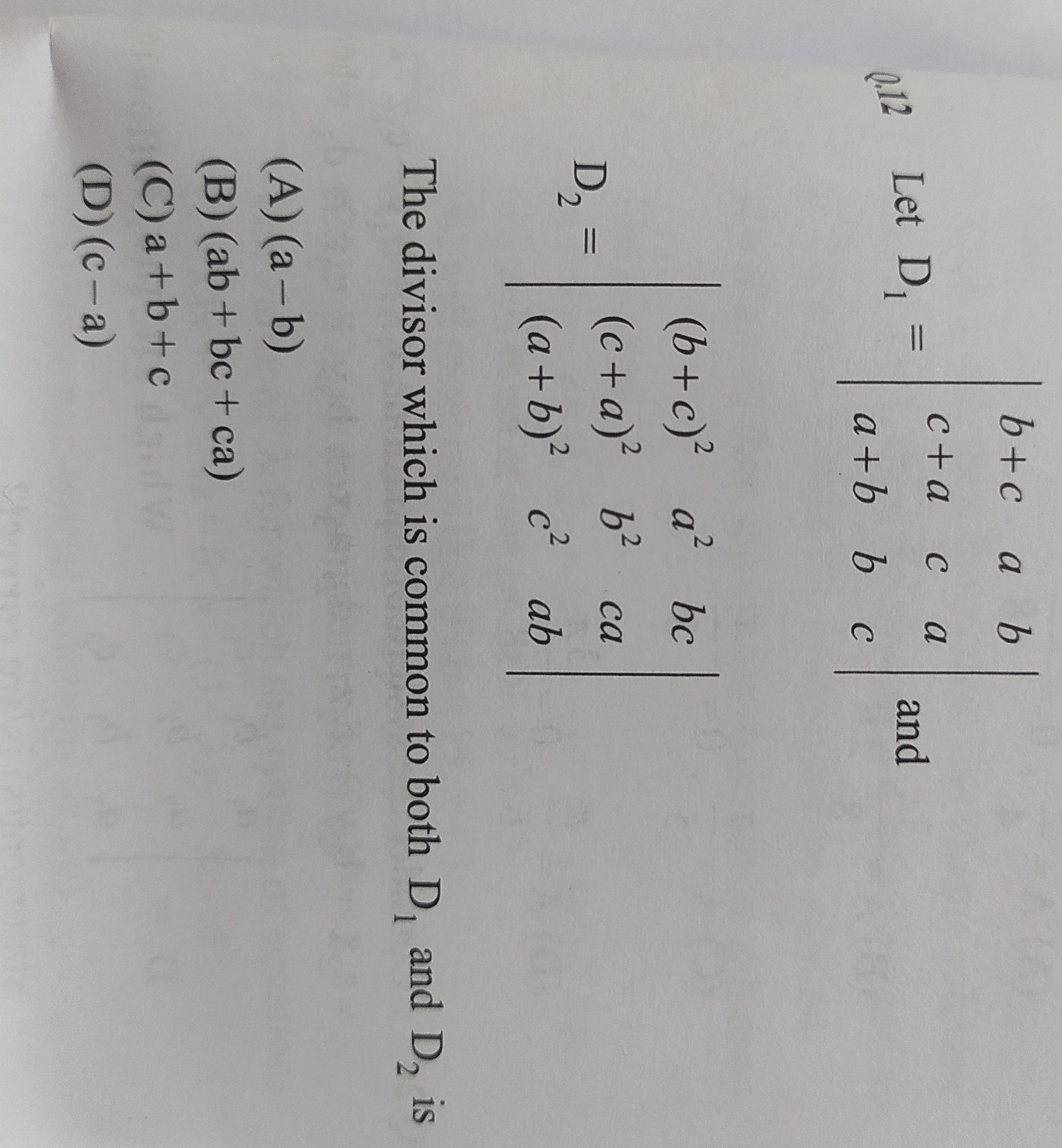Question
Question: Let $D_1 = \begin{vmatrix} b+c & a & b \\ c+a & c & a \\ a+b & b & c \end{vmatrix}$ and $D_2 = \beg...
Let D1=b+cc+aa+bacbbac and
D2=(b+c)2(c+a)2(a+b)2a2b2c2bccaab
The divisor which is common to both D1 and D2 is

(a−b)
(ab + bc + ca)
a+b+c
(c-a)
a+b+c, c-a
Solution
Solution:
We want to show that both
D1=b+cc+aa+bacbbacandD2=(b+c)2(c+a)2(a+b)2a2b2c2bccaabare divisible by a factor that vanishes when either
a+b+c=0orc−a=0.Checking a+b+c:
Choose any numbers such that
a+b+c=0.For example, take a=1,b=2,c=−3. Then every row of each determinant is “balanced” so that direct computation shows
D1=0andD2=0.Thus, the linear factor a+b+c divides both D1 and D2.
Checking c−a:
Next, set
c=a.For any values of a and b, substitution c=a causes two rows to become identical in each determinant (or forces their dependence), and hence
D1=0andD2=0.Thus, (c−a) is also a factor of both determinants.
Testing the other options:
A similar test (for example, setting a=b with a=1,b=1,c=1) shows that neither (a−b) nor (ab+bc+ca) always cause D1 and D2 to vanish.
Conclusion:
Both a+b+c and (c−a) are common divisors of D1 and D2.
